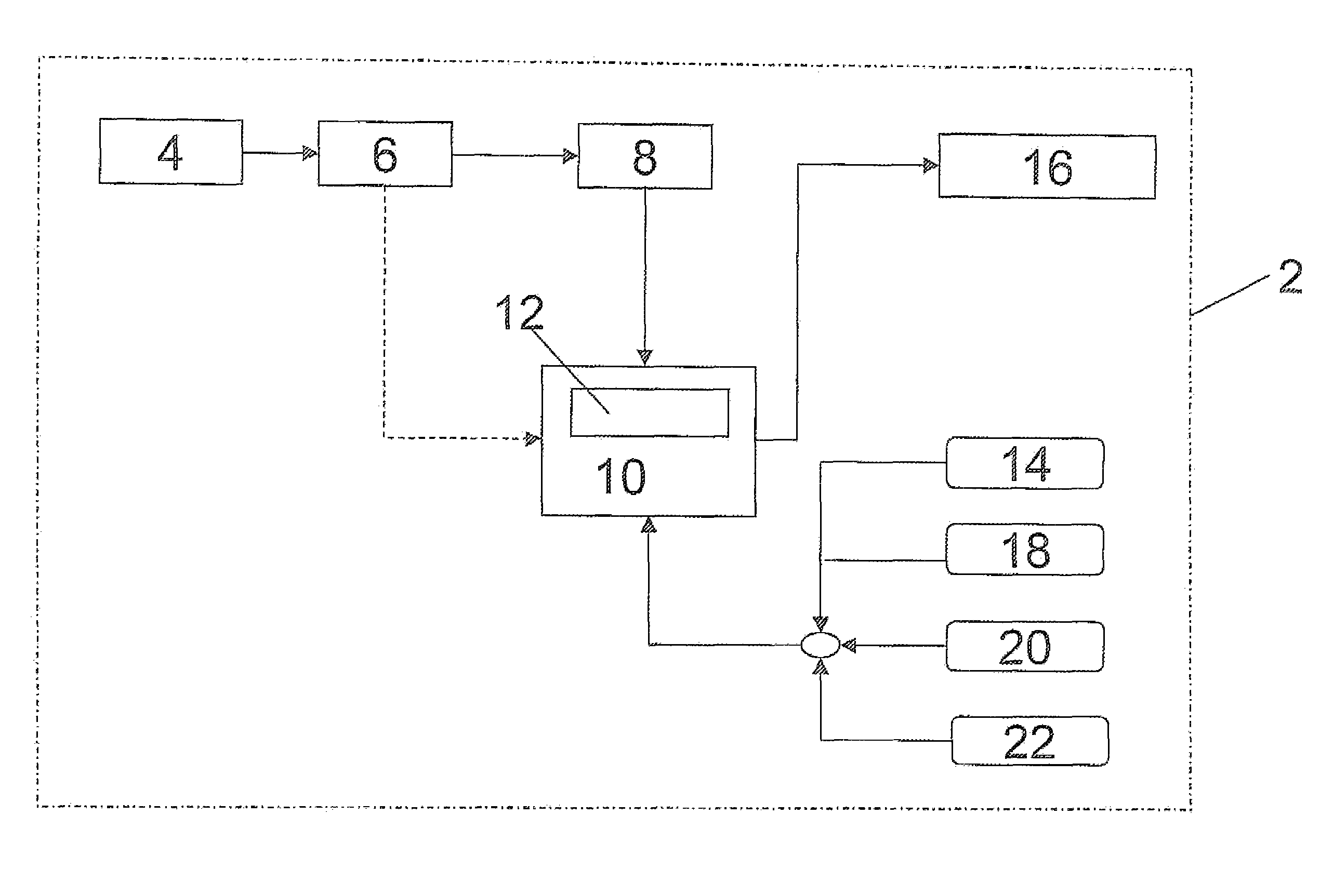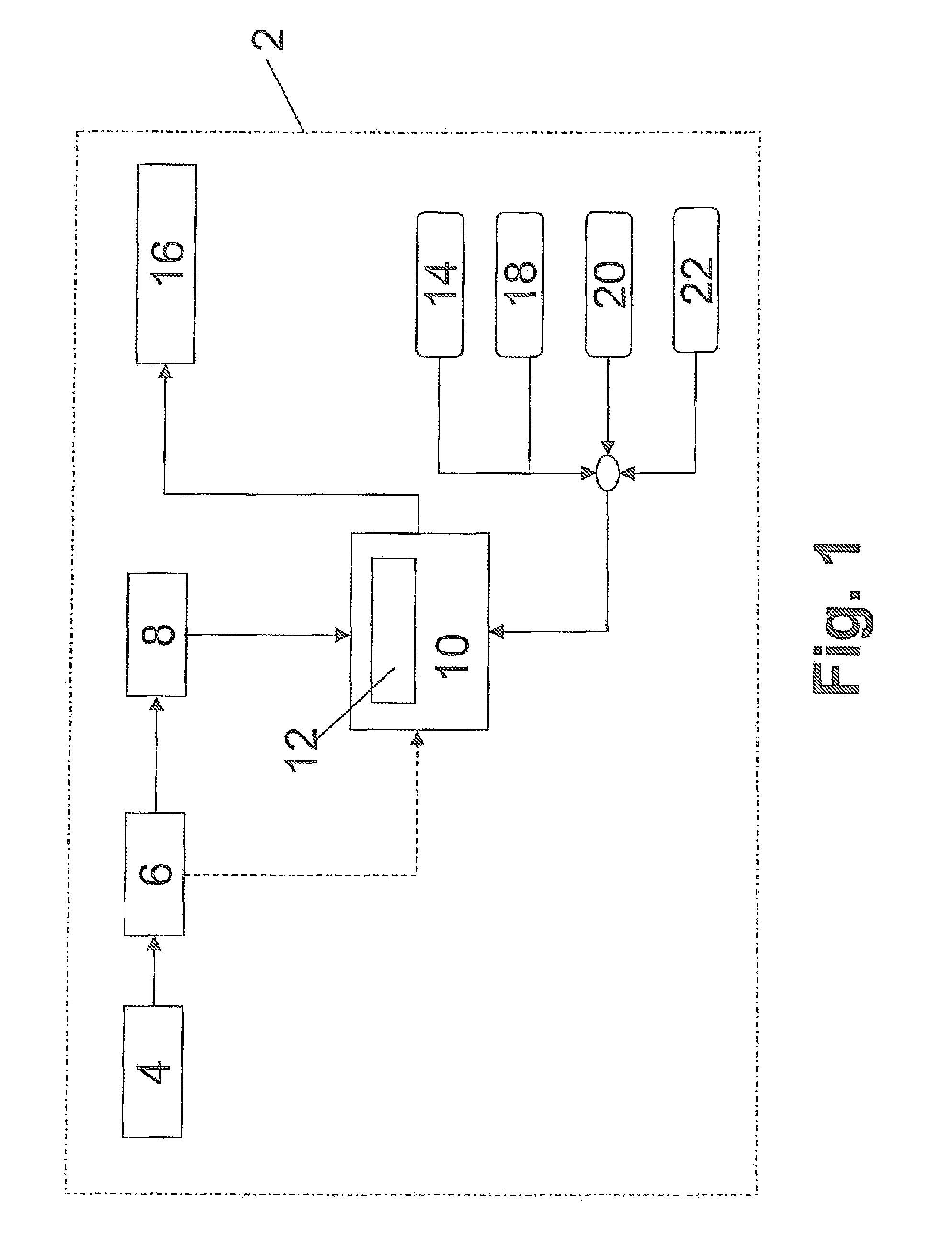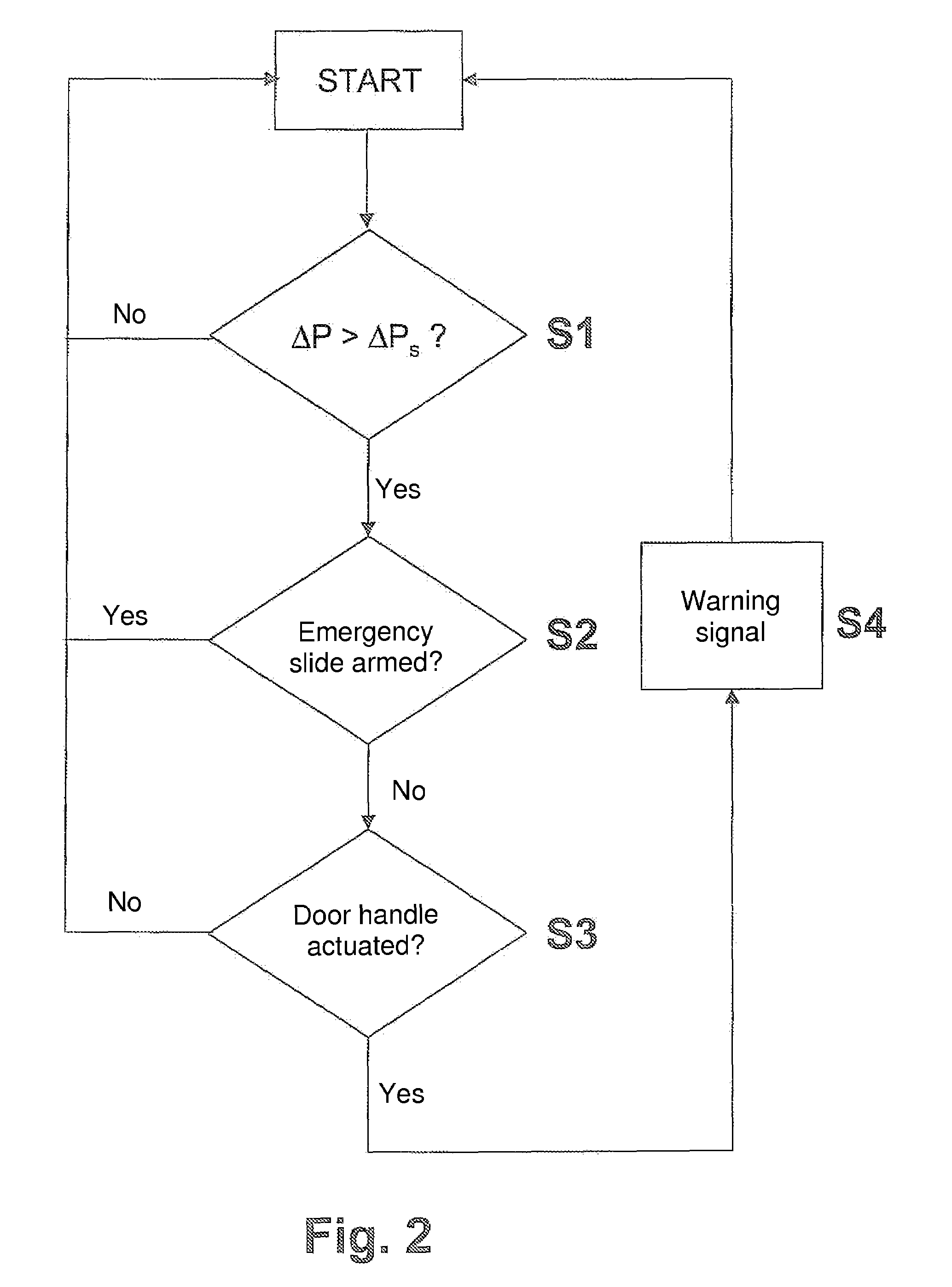Aircraft provided with a cabin differential pressure warning system
a technology of differential pressure warning and aircraft, which is applied in the direction of aircraft accessories, instruments, transportation and packaging, etc., can solve the problems of no longer functioning of the cabin differential pressure warning system, structural damage to the aircraft, and a considerable danger to persons operating the door or in its immediate vicinity
- Summary
- Abstract
- Description
- Claims
- Application Information
AI Technical Summary
Benefits of technology
Problems solved by technology
Method used
Image
Examples
Embodiment Construction
[0016]An aircraft according to the invention comprises a pressurized cabin having a lockable door and a door locking device. The door has a handle or another suitable element with which the door locking device for locking and unlocking can be actuated and with which the door can be moved either manually or with the assistance of an automatic door mechanism in order to be opened or closed. In this embodiment, the door is configured with an emergency slide. In case of an emergency, it should be possible to deploy the emergency slide rapidly. In order to allow this, the emergency slide first has to be armed by means of an operating element. Then, when the door is subsequently opened, the emergency slide is immediately activated and deployed automatically by means of a triggering mechanism. In contrast, during normal operation (no emergency), for instance, when the passengers are going to leave the pressurized cabin via the door once the aircraft has parked, the emergency slide must not...
PUM
 Login to View More
Login to View More Abstract
Description
Claims
Application Information
 Login to View More
Login to View More - R&D
- Intellectual Property
- Life Sciences
- Materials
- Tech Scout
- Unparalleled Data Quality
- Higher Quality Content
- 60% Fewer Hallucinations
Browse by: Latest US Patents, China's latest patents, Technical Efficacy Thesaurus, Application Domain, Technology Topic, Popular Technical Reports.
© 2025 PatSnap. All rights reserved.Legal|Privacy policy|Modern Slavery Act Transparency Statement|Sitemap|About US| Contact US: help@patsnap.com



